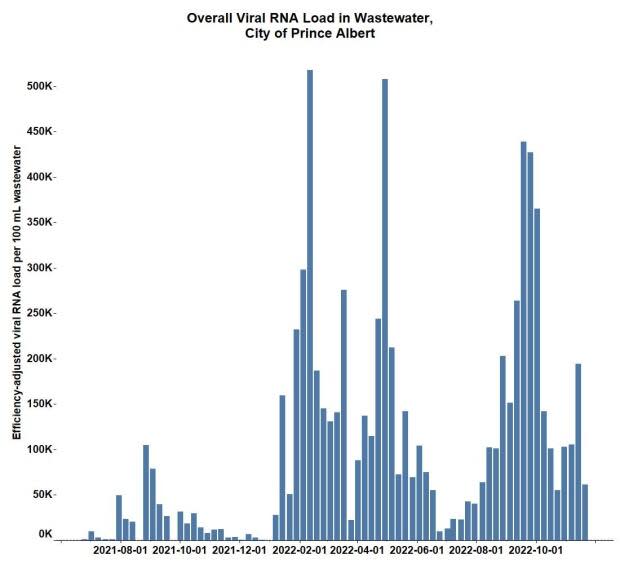COVID-19 levels in wastewater down in Saskatoon, P.A. and North Battleford

COVID-19 levels in wastewater are dropping in three Saskatchewan cities, according to University of Saskatchewan researchers who have been tracking the viral load in Saskatoon, Prince Albert and North Battleford.
In Saskatoon, viral levels in wastewater have dipped 14.9 per cent from the previous week. This comes after a massive spike of 460 per cent the week before that.
Prince Albert's fell 68.2 per cent and in North Battleford's fell 64.8 per cent.
The results from the studies can help predict a rise or fall of COVID-19 diagnoses about a week in advance.
Researchers say most people start shedding SARS-CoV-2, the virus that causes COVID-19, within 24 hours of being infected, but often won't present symptoms for several days after that.

The levels in all three cities are considered medium because they are below the 10-week average.
Femi Oloye, the project manager for the research, said it's too early to know if viral loads will continue to fall.
He said other respiratory viruses like the flu and respiratory syncytial virus are circulating in the community, making the situation more volatile.
"If they are exposed … there could be the combined effect of flu and COVID. And that is why it's very important for people to protect themselves," Oloye said.

Last week Dr. Saqib Shahab, the province's chief medical health officer, said the province is not looking at school mask mandates.
"I don't think schools or medical health officers would like to go there, because really, at this point, it may not be that helpful in any case," Shahab said, adding his doubts come from the fact that there is more than just COVID-19 circulating this fall.
He did say schools should be mask-friendly.

The BA.5 variant, which had been the dominant strain, now makes up less than half of the COVID-19 found in the wastewater.
The latest subvariant, BQ.1, has been found in all three cities.
"BQ 1 will be the driving variant that will be causing with what we are seeing now, since B5 is going down," Oloye said.
John Giesy, a University of Saskatchewan toxicology professor, said in an email that it is difficult to predict a trend for the future from the current data.


